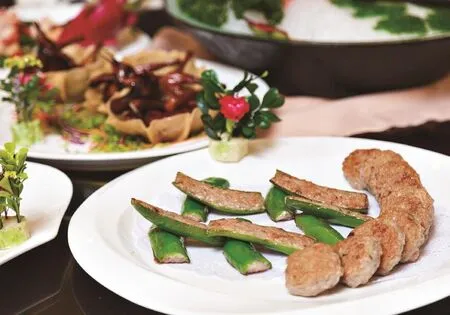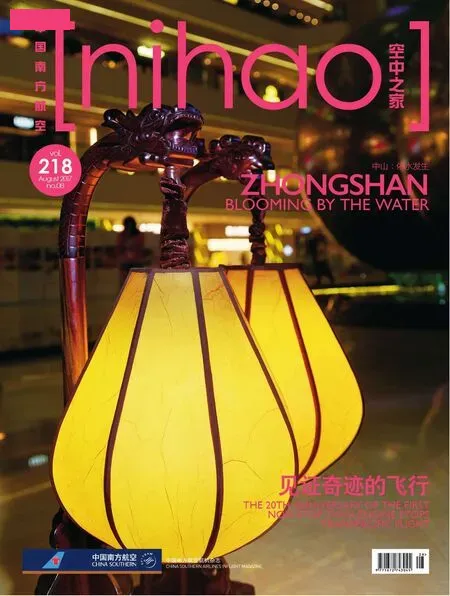Delicacies From the Water
Delicacies From the Water
There is a common saying that “all delicious food is in Guangzhou”, but many Zhongshaners turn up their nose at this claim. They believe that all delicious food gathers in Guangzhou just because of its status of being the capital city and its convenient transportation network. Zhongshan civilians insist that their hometown is the origin of so-called “Guangzhou Cuisine”, a must try in the eyes of many non-locals and foreigners. Thanks to the rambling rivers and ponds, most of these delicacies from Zhongshan have a close connection with their lives near the water.
Haizhou Fishcake
In the south of China, where fi sh is plentiful, there is a traditional cuisine known as “fi shcakes”. When it comes to the seasons of fi shing, people had to explore ways to semi-cook their excess catch so that they can be preserved longer. Gradually in these areas, fi shcake-making became a major custom.
Haizhou Fishcakes are made from daces, a small fi sh that lives in either freshwater or brackish water. First, you get rid of all skin and bones and mash the remaining parts together. After enough beating and mixing to form the fi sh dough into small round cakes, you fi nally fry the cakes in oil.
According to local chefs, the key ingredient that makes Haizhou Fishcakes different from the others is that a less starchy fl our is added so that people can still enjoy the daces' fresh taste when eating.
Zhongshan Grass Carp
When tasting, you can tell that the Zhongshan grass carp has a special fl avour to it, due to the lean and crisp meat, and considered to be the perfect addition to hot pot.
Many people are aware that these kinds of carp are a special local product in Dongsheng, but few know the history.
According to local people, this delicacy can be traced back to the 1970s. At that time, many young intellectuals living in cities were ordered to go to the countryside during the Cultural Revolution, and some ended up in Shiqi town. Here, they planted lots of broad beans on the mountains neighbouring the Changjiang Reservoir. Some of these beans would inevitably fall into the pond and become food for carp in the water. Later people recognised that after eating the beans the carp became more delicious. Like this, the Zhongshan Grass Carp gradually gained its fame.
If you are interested in giving it a try, you should check out the Scenic Holiday Hotel Restaurant, where these authentic carp dishes can still be found.

Haizhou Fishcake
Shiqi Squabs
Squabs are very common in Cantonese restaurants all over the world, but few may know that it is a special local delicacy in Shiqi. Just like those socalled Peking Duck restaurants found throughout China and even the world, Shiqi squabs have also seen their fair share of copycats.
When raising squabs, you need plenty of water, which can be easily obtained in Zhongshan with its scattered rivers and ponds.
Long ago, Chinese from Zhongshan that were living abroad brought back a variety of pigeon species and crossbred them with local varieties. From here, they created an entirely new species that they decided had the best taste to complete this dish.
The best time to eat a squab is 22 - 25 days after its birth, when is usually weighs around 600g-700g. Usually, a Shiqi squab has a big body, and its meat is very lean, easily digestible and fi ne-grained.
Therefore, the next time you order a Shiqi squab and only to discover a scrawny roasted bird on the plate, undoubtedly, you are experiencing the work of a copycat.

